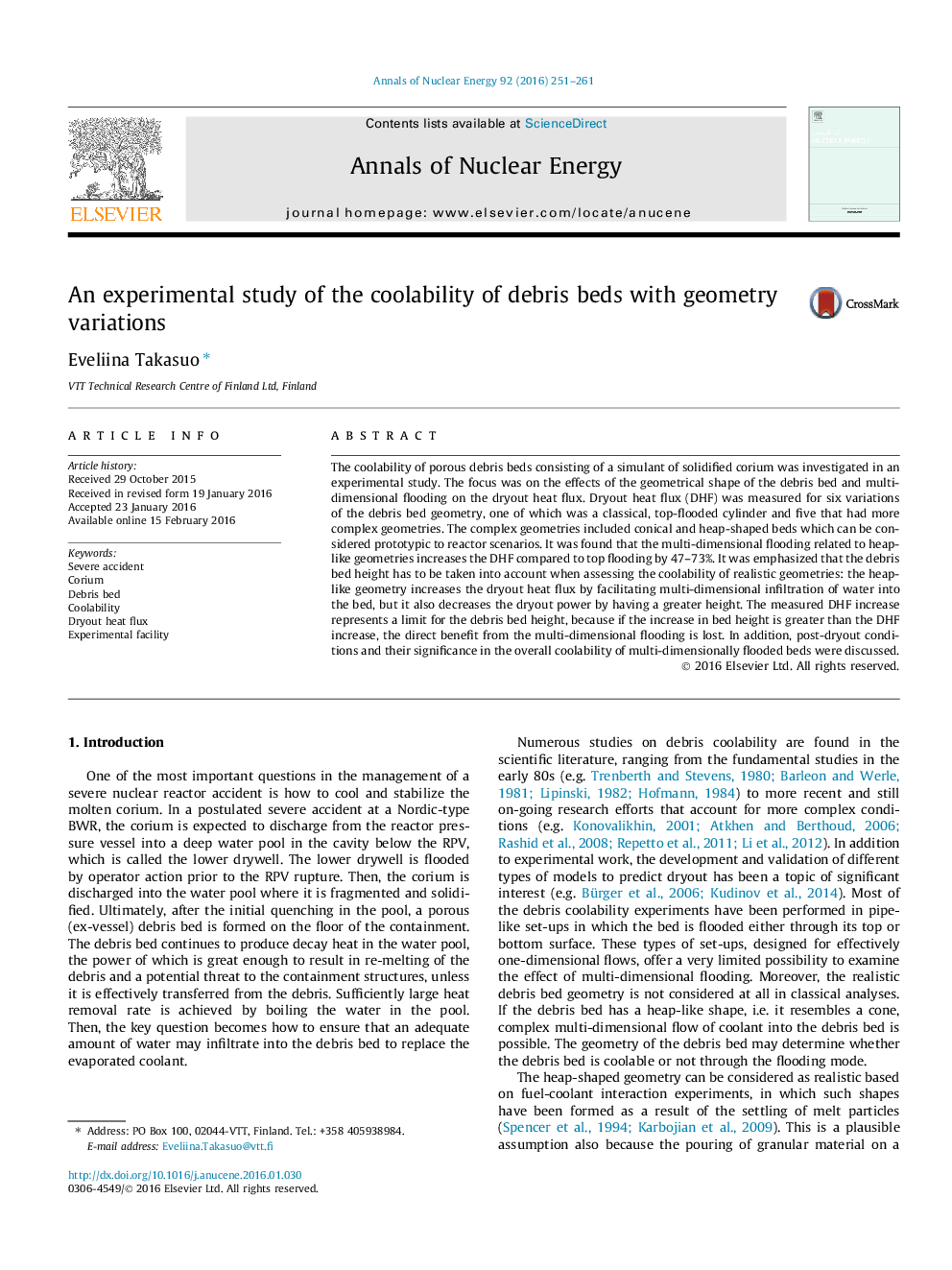| Article ID | Journal | Published Year | Pages | File Type |
|---|---|---|---|---|
| 1727878 | Annals of Nuclear Energy | 2016 | 11 Pages |
•The coolability of porous debris beds was investigated in an experimental study.•Dryout heat flux was measured for six different debris bed geometries.•Heap-shaped debris beds had 47–73% greater dryout heat flux than a top-flooded bed.•It was shown that the bed height has to be taken into account, in addition to the shape.•The significance of post-dryout conditions in the overall coolability was discussed.
The coolability of porous debris beds consisting of a simulant of solidified corium was investigated in an experimental study. The focus was on the effects of the geometrical shape of the debris bed and multi-dimensional flooding on the dryout heat flux. Dryout heat flux (DHF) was measured for six variations of the debris bed geometry, one of which was a classical, top-flooded cylinder and five that had more complex geometries. The complex geometries included conical and heap-shaped beds which can be considered prototypic to reactor scenarios. It was found that the multi-dimensional flooding related to heap-like geometries increases the DHF compared to top flooding by 47–73%. It was emphasized that the debris bed height has to be taken into account when assessing the coolability of realistic geometries: the heap-like geometry increases the dryout heat flux by facilitating multi-dimensional infiltration of water into the bed, but it also decreases the dryout power by having a greater height. The measured DHF increase represents a limit for the debris bed height, because if the increase in bed height is greater than the DHF increase, the direct benefit from the multi-dimensional flooding is lost. In addition, post-dryout conditions and their significance in the overall coolability of multi-dimensionally flooded beds were discussed.
